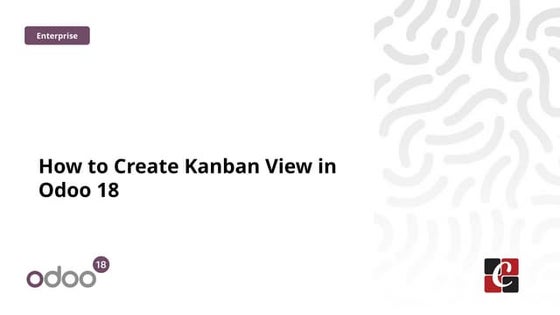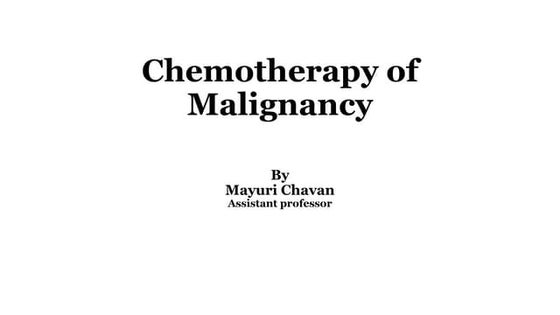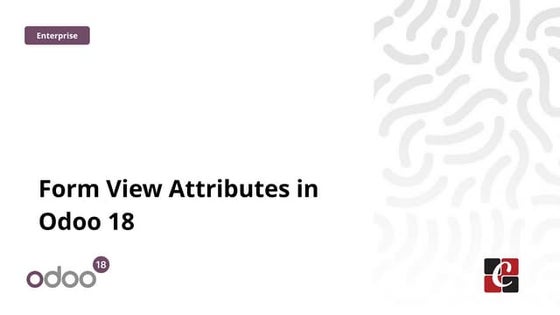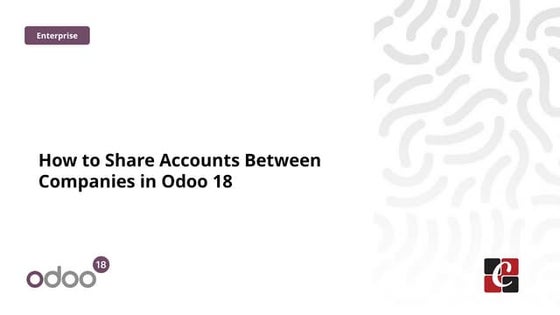MCQ PHYSIOLOGY II (DR. NASIR MUSTAFA) MCQS)
- 1. 1. During the cardiac action potential, the plateau phase (Phase 2) is primarily due to: A) Inactivation of Na⁺ channels B) Balance between Ca²⁺ influx and K⁺ efflux C) Rapid efflux of Cl⁻ ions D) Hyperpolarization due to Na⁺/K⁺ ATPase E) Increased permeability to Mg²⁺ 2. The Frank-Starling mechanism states that: A) Heart rate increases with sympathetic stimulation B) Stroke volume increases with increased venous return C) Afterload determines cardiac output D) Coronary blood flow is autoregulated E) Ejection fraction decreases with exercise 3. Which of the following best describes the effect of acetylcholine on the SA node? A) Increases If (funny current) B) Opens L-type Ca²⁺ channels C) Activates Gq-coupled receptors D) Hyperpolarizes the membrane by increasing K⁺ conductance E) Enhances Na⁺/Ca²⁺ exchanger activity
- 2. 4. A decrease in carotid sinus pressure would result in: A) Increased parasympathetic activity B) Decreased heart rate C) Vasodilation of systemic arterioles D) Increased sympathetic outflow E) Suppression of the baroreceptor reflex 5. The greatest resistance to blood flow in the circulatory system occurs in the: A) Aorta B) Large veins C) Arterioles D) Capillaries E) Venules 6. The Haldane effect refers to: A) Increased CO₂ binding to hemoglobin in the presence of O₂ B) Enhanced O₂ unloading in tissues due to CO₂ C) Shift of the oxygen-hemoglobin dissociation curve to the right with acidosis D) Decreased CO₂ transport in venous blood compared to arterial blood E) The effect of 2,3-BPG on O₂ affinity 7. Hypoxic pulmonary vasoconstriction is primarily mediated by: A) Increased nitric oxide (NO) production B) Inhibition of voltage-gated K⁺ channels in smooth muscle C) Activation of β₂-adrenergic receptors D) Elevated endothelin-1 release E) Prostaglandin-induced vasodilation 8. The primary determinant of whether hemoglobin will bind or release O₂ in tissues is: A) Blood pressure B) Temperature C) Partial pressure of O₂ (PO₂) D) pH E) Red blood cell count
- 3. 9. A patient with chronic obstructive pulmonary disease (COPD) is most likely to exhibit: A) Decreased FEV1/FVC ratio B) Increased lung compliance C) Decreased residual volume D) Normal PaCO₂ E) Absence of V/Q mismatch 10. Central chemoreceptors are most sensitive to changes in: A) Arterial PO₂ B) CSF pH C) Plasma K⁺ levels D) Blood glucose E) Serum bicarbonate 11. The macula densa cells of the juxtaglomerular apparatus respond to: A) Increased NaCl delivery B) Low blood pressure in afferent arterioles C) High plasma renin levels D) Decreased angiotensin II E) Elevated aldosterone 12. Which segment of the nephron is impermeable to water? A) Proximal convoluted tubule B) Descending loop of Henle C) Ascending loop of Henle D) Distal convoluted tubule E) Collecting duct 13. A patient with syndrome of inappropriate antidiuretic hormone (SIADH) would exhibit: A) Hypernatremia B) Decreased urine osmolality C) High plasma ADH levels D) Polyuria E) Hypotonic plasma
- 4. 14. The primary driving force for glomerular filtration is: A) Colloid osmotic pressure B) Hydrostatic pressure in Bowman’s capsule C) Hydrostatic pressure in glomerular capillaries D) Tubular reabsorption rate E) Sympathetic tone 15. Which hormone directly increases sodium reabsorption in the distal tubule? A) Atrial natriuretic peptide (ANP) B) Aldosterone C) Parathyroid hormone (PTH) D) Antidiuretic hormone (ADH) E) Glucagon 16. Saltatory conduction occurs in: A) Unmyelinated axons B) Myelinated axons C) Dendrites D) Synaptic terminals E) Glial cells 17. The neurotransmitter at the neuromuscular junction is: A) Norepinephrine B) Dopamine C) Acetylcholine D) Serotonin E) GABA 18. Inhibition of the enzyme acetylcholinesterase would result in: A) Decreased synaptic ACh levels B) Prolonged depolarization at the motor end plate C) Hyperpolarization of the postsynaptic membrane D) Blockade of nicotinic receptors E) Reduced Ca²⁺ influx
- 5. 19. The resting membrane potential of a neuron is closest to the equilibrium potential of: A) Na⁺ B) K⁺ C) Ca²⁺ D) Cl⁻ E) Mg²⁺ 20. Which brain structure is primarily responsible for coordinating voluntary movement? A) Hypothalamus B) Cerebellum C) Medulla oblongata D) Thalamus E) Hippocampus 21. The primary site of iron absorption in the GI tract is the: A) Stomach B) Jejunum C) Ileum D) Duodenum E) Colon 22. Which hormone stimulates gallbladder contraction and pancreatic enzyme secretion? A) Gastrin B) Secretin C) Cholecystokinin (CCK) D) Motilin E) Ghrelin 23. Parietal cells secrete: A) Pepsinogen B) Mucus C) Intrinsic factor D) Trypsin E) Bicarbonate
- 6. 24. The migrating motor complex (MMC) is regulated by: A) Gastrin B) Motilin C) Secretin D) CCK E) GIP 25. Which of the following increases gastric acid secretion? A) Somatostatin B) Histamine acting on H₂ receptors C) Prostaglandin E₂ D) Secretin E) VIP 26. The primary effect of insulin on skeletal muscle is to: A) Stimulate glycogenolysis B) Increase gluconeogenesis C) Promote glucose uptake via GLUT4 D) Activate hormone-sensitive lipase E) Inhibit protein synthesis 27. A patient with primary hyperparathyroidism would most likely exhibit: A) Hypocalcemia B) Hyperphosphatemia C) Elevated PTH levels D) Decreased urinary cAMP E) Low 1,25-dihydroxycholecalciferol 28. Cortisol secretion is regulated by: A) CRH → ACTH → Cortisol B) TRH → TSH → Cortisol C) GnRH → FSH → Cortisol D) Dopamine → Prolactin → Cortisol E) GHRH → GH → Cortisol
- 7. 29. The primary mechanism of thyroid hormone action involves: A) Activation of membrane-bound receptors B) Binding to nuclear receptors and altering gene transcription C) Increasing intracellular cAMP D) Stimulating phospholipase C E) Inhibiting tyrosine kinase 30. Which hormone is responsible for the "fight or flight" response? A) Cortisol B) Aldosterone C) Epinephrine D) Insulin E) Thyroxine 31. During skeletal muscle contraction, the role of troponin is to: A) Bind actin and myosin B) Block myosin-binding sites on actin C) Release Ca²⁺ from the sarcoplasmic reticulum D) Hydrolyze ATP E) Stabilize the T-tubule membrane 32. The length-tension relationship of muscle states that maximum tension is generated when: A) Sarcomeres are at their shortest length B) There is minimal overlap between actin and myosin C) The muscle is at its optimal resting length D) Titin is fully stretched E) Ca²⁺ concentration is lowest 33. Rigor mortis occurs due to: A) Depletion of ATP preventing myosin detachment from actin B) Excessive acetylcholine release C) Hyperpolarization of the sarcolemma D) Overactivation of Na⁺/K⁺ ATPase E) Loss of tropomyosin
- 8. 34. Which type of muscle fiber has the highest oxidative capacity? A) Type IIx (fast glycolytic) B) Type IIa (fast oxidative-glycolytic) C) Type I (slow oxidative) D) Type IIb (super-fast) E) All have equal oxidative capacity 35. The primary source of Ca²⁺ for smooth muscle contraction is: A) Sarcoplasmic reticulum B) Extracellular fluid C) Mitochondria D) T-tubules E) Golgi apparatus 36. The surge in luteinizing hormone (LH) is triggered by: A) High progesterone levels B) Positive feedback from estrogen C) Low inhibin levels D) GnRH suppression E) Prolactin release 37. Spermatogenesis occurs in the: A) Epididymis B) Seminiferous tubules C) Prostate gland D) Vas deferens E) Bulbourethral glands 38. The hormone responsible for maintaining the corpus luteum during early pregnancy is: A) Progesterone B) Human chorionic gonadotropin (hCG) C) Follicle-stimulating hormone (FSH) D) Oxytocin E) Relaxin
- 9. 39. During the menstrual cycle, the proliferative phase is driven by: A) Progesterone B) Estrogen C) FSH D) LH E) Inhibin 40. The primary function of Sertoli cells is to: A) Secrete testosterone B) Support sperm development C) Produce seminal fluid D) Regulate GnRH release E) Synthesize inhibin 41. A patient with chronic obstructive pulmonary disease (COPD) is most likely to have: A) Metabolic acidosis B) Respiratory alkalosis C) Respiratory acidosis D) Metabolic alkalosis E) Normal pH 42. The primary buffer system in the blood is: A) Phosphate buffer B) Protein buffer C) Bicarbonate buffer D) Hemoglobin buffer E) Ammonia buffer 43. Renal compensation for respiratory acidosis involves: A) Excreting H⁺ and reabsorbing HCO₃⁻ B) Excreting HCO₃⁻ and retaining H⁺ C) Increasing Cl⁻ excretion D) Decreasing NH₄⁺ production E) Suppressing aldosterone
- 10. 44. A patient with diabetic ketoacidosis (DKA) would exhibit: A) Increased anion gap B) Respiratory alkalosis C) Low blood glucose D) Elevated pH E) Hypoventilation 45. The primary cause of metabolic alkalosis is: A) Hyperventilation B) Excessive vomiting C) Renal failure D) Lactic acidosis E) Hypokalemia 46. During high-intensity exercise, the primary energy source is: A) Fatty acids B) Ketones C) Phosphocreatine D) Glycogen (anaerobic glycolysis) E) Protein 47. The oxygen debt after exercise is primarily due to: A) Replenishing ATP stores B) Converting lactate to glucose (Cori cycle) C) Restoring phosphocreatine D) Oxidizing accumulated NADH E) All of the above 48. The primary cardiovascular adaptation to endurance training is: A) Increased heart rate B) Decreased stroke volume C) Increased maximal oxygen uptake (VO₂ max) D) Reduced blood volume E) Vasoconstriction in muscles
- 11. 49. Which hormone increases significantly during prolonged exercise? A) Insulin B) Glucagon C) Aldosterone D) Thyroxine E) Parathyroid hormone 50. The lactate threshold is the point at which: A) Muscle glycogen is depleted B) Blood lactate rises sharply C) VO₂ max plateaus D) Anaerobic respiration stops E) Heart rate reaches maximum 51. The primary mechanism of heat loss during exercise is: A) Radiation B) Conduction C) Convection D) Evaporation (sweating) E) Shivering 52. The diving reflex involves: A) Bradycardia and peripheral vasoconstriction B) Tachycardia and vasodilation C) Increased ventilation D) Suppressed baroreceptor response E) Activation of sympathetic nervous system 53. A shift to the right in the oxygen-hemoglobin dissociation curve is caused by: A) Decreased temperature B) Increased pH C) Decreased 2,3-BPG D) Increased CO₂ (Bohr effect) E) Low PCO₂
- 12. 54. The primary stimulus for erythropoietin (EPO) release is: A) High blood pressure B) Hypoxia C) Hyperglycemia D) Elevated cortisol E) Alkalosis 55. Which organ is the primary site of gluconeogenesis during fasting? A) Liver B) Skeletal muscle C) Brain D) Kidneys E) Adipose tissue 56. The primary function of the zona glomerulosa of the adrenal cortex is to secrete: A) Cortisol B) Aldosterone C) Epinephrine D) Androgens E) Insulin 57. The most abundant cation in intracellular fluid is: A) Na⁺ B) K⁺ C) Ca²⁺ D) Mg²⁺ E) Cl⁻ 58. The primary neurotransmitter of the parasympathetic nervous system is: A) Norepinephrine B) Dopamine C) Acetylcholine D) Serotonin E) GABA
- 13. 59. The hormone most responsible for increasing basal metabolic rate (BMR) is: A) Cortisol B) Thyroxine (T₄) C) Insulin D) Growth hormone E) Prolactin 60. The primary ion channel responsible for the depolarization phase of an action potential is: A) Voltage-gated K⁺ channel B) Voltage-gated Na⁺ channel C) Voltage-gated Ca²⁺ channel D) Ligand-gated Cl⁻ channel E) Leak K⁺ channel 13. Advanced Physiology (Challenging!) 61. In the countercurrent multiplier system of the kidney, the ascending limb of Henle is: A) Permeable to water but not NaCl B) Impermeable to water but actively transports NaCl C) The site of ADH action D) Where urea is concentrated E) The primary site of H⁺ secretion 62. A decrease in arterial PO₂ below 60 mmHg will significantly stimulate ventilation via: A) Central chemoreceptors B) Peripheral chemoreceptors C) Baroreceptors D) Pulmonary stretch receptors E) J-receptors 63. The Bainbridge reflex responds to: A) Increased venous return → increased heart rate B) Decreased blood pressure → vasoconstriction C) Hypoxia → hyperventilation D) Hypercapnia → increased sympathetic tone E) Acidosis → renal H⁺ excretion
- 14. 64. Which of the following is a feature of Grave’s disease (hyperthyroidism)? A) Bradycardia B) Cold intolerance C) Weight gain D) Exophthalmos E) Decreased T₃/T₄ levels 65. The primary mechanism of water reabsorption in the collecting duct is: A) Active transport of Na⁺ B) Osmosis driven by medullary hypertonicity C) Facilitated diffusion via aquaporin-1 D) Countercurrent exchange E) Urea secretion 14. Clinical Application Questions 66. A patient with Addison’s disease would likely exhibit: A) Hyperglycemia B) Hypertension C) Hyperkalemia D) Elevated cortisol E) Decreased skin pigmentation 67. In a patient with a pheochromocytoma, you would expect: A) Hypotension B) Bradycardia C) Episodic hypertension and tachycardia D) Hypoglycemia E) Hypersecretion of cortisol 68. A deficiency in vitamin D would lead to: A) Hypocalcemia and secondary hyperparathyroidism B) Hypercalcemia and hypophosphatemia C) Increased bone mineralization D) Suppressed PTH secretion E) Elevated calcitonin
- 15. 69. Which condition is associated with low levels of ADH? A) Syndrome of inappropriate antidiuretic hormone (SIADH) B) Diabetes insipidus C) Cushing’s syndrome D) Conn’s syndrome E) Addison’s disease 70. A patient with hyperaldosteronism would exhibit: A) Hyperkalemia B) Metabolic acidosis C) Hypertension and hypokalemia D) Hyponatremia E) Decreased urine Na⁺ excretion 71. The Fick principle for calculating cardiac output relies on measuring: A) Arterial and venous O₂ content difference B) Blood pressure and vascular resistance C) Stroke volume and heart rate D) Ejection fraction and end-diastolic volume E) Pulmonary capillary wedge pressure 72. The Hering-Breuer reflex prevents: A) Hyperventilation B) Lung overinflation C) Hypoxia D) Respiratory acidosis E) Atelectasis 73. The Wolff-Chaikoff effect describes: A) Autoregulation of thyroid hormone synthesis B) Insulin resistance in obesity C) Cortisol feedback on ACTH D) Aldosterone escape mechanism E) Baroreceptor adaptation
- 16. 74. In metabolic acidosis, the respiratory compensation is: A) Hyperventilation (decreased PCO₂) B) Hypoventilation (increased PCO₂) C) No change in ventilation D) Increased HCO₃⁻ retention E) Decreased renal NH₄⁺ excretion 75. The Anrep effect refers to: A) Increased heart rate with increased venous return B) Myocardial contractility increase with afterload C) Coronary vasodilation during exercise D) Baroreceptor resetting in hypertension E) Renal autoregulation of blood flow 76. The Gregg phenomenon refers to: A) Coronary vasodilation during increased cardiac work B) Autoregulation of cerebral blood flow C) Paradoxical vasoconstriction in hypoxic pulmonary vasculature D) Baroreceptor resetting in chronic hypertension E) Anrep effect on contractility 77. A patient with aortic stenosis would exhibit: A) Wide pulse pressure B) Crescendo-decrescendo murmur C) Pulsus paradoxus D) Increased preload E) Diastolic rumble 78. The Bowditch effect (treppe phenomenon) describes: A) Increased contractility with increased heart rate B) Decreased afterload in exercise C) Coronary steal syndrome D) Ventricular hypertrophy in hypertension E) Autonomic escape rhythms
- 17. 79. A patient with high-altitude pulmonary edema (HAPE) would have: A) Hypoxic vasodilation in pulmonary vessels B) Excessive nitric oxide (NO) production C) Increased capillary permeability due to hypoxia D) Left ventricular failure E) Metabolic alkalosis 80. The Ondine’s curse syndrome results from: A) Loss of automatic respiratory control (central hypoventilation) B) Destruction of peripheral chemoreceptors C) Bilateral diaphragm paralysis D) Extreme V/Q mismatch E) Chronic CO₂ retention 81. In pulmonary fibrosis, which parameter is most reduced? A) FEV1/FVC ratio B) Total lung capacity (TLC) C) Residual volume (RV) D) Diffusion capacity (DLCO) E) Airway resistance 82. A patient with Bartter syndrome would present with: A) Hypertension, hypokalemia, metabolic alkalosis B) Hypotension, hypokalemia, metabolic alkalosis C) Hyperaldosteronism, hypernatremia D) Renal glycosuria, aminoaciduria E) Hypercalciuria, nephrolithiasis 83. The Goldman-Hodgkin-Katz equation is used to calculate: A) Glomerular filtration rate (GFR) B) Membrane potential considering multiple ions C) Renal plasma flow D) Oxygen content of blood E) Alveolar ventilation
- 18. 84. In distal renal tubular acidosis (Type 1), the primary defect is: A) Impaired H⁺ secretion in collecting duct B) Proximal HCO₃⁻ wasting C) Aldosterone resistance D) Thick ascending limb dysfunction E) Urea transporter defect 85. A lesion in the arcuate fasciculus would cause: A) Broca’s aphasia B) Wernicke’s aphasia C) Conduction aphasia D) Global aphasia E) Alexia without agraphia 86. The pedunculopontine nucleus (PPN) is critical for: A) REM sleep generation B) Parkinsonian tremor suppression C) Pain modulation D) Thermoregulation E) Cerebellar coordination 87. In Huntington’s disease, the neurotransmitter imbalance involves: A) Excess GABA in striatum B) Dopamine deficiency in substantia nigra C) Glutamate excitotoxicity D) Loss of acetylcholine in basal forebrain E) Serotonin depletion in raphe nuclei 88. A patient with Nelson’s syndrome would exhibit: A) Hypopigmentation B) Adrenal insufficiency C) Pituitary macroadenoma post-adrenalectomy D) Hypoglycemia E) Thyroid storm
- 19. 89. The Jod-Basedow phenomenon occurs due to: A) Iodine deficiency → goiter B) Excessive iodine → hyperthyroidism C) Thyroid hormone resistance D) Pituitary TSH-secreting adenoma E) Autoimmune thyroid destruction 90. In pseudohypoparathyroidism (Type 1a), the defect is in: A) PTH receptor B) Gₛα protein (GNAS1 mutation) C) Vitamin D activation D) Calcium-sensing receptor E) Renal 1α-hydroxylase 91. The Cushing reflex (triad of hypertension, bradycardia, irregular respiration) indicates: A) Severe hypoglycemia B) Increased intracranial pressure C) Pheochromocytoma crisis D) Myocardial infarction E) Acute adrenal insufficiency 92. The Osmoreceptor cells in the hypothalamus are most sensitive to: A) Na⁺ concentration B) Plasma osmolarity C) K⁺ levels D) Glucose concentration E) pH changes 93. In hereditary spherocytosis, the pathophysiology involves: A) Spectrin deficiency → RBC membrane fragility B) Hemoglobin S polymerization C) Glucose-6-phosphate dehydrogenase (G6PD) deficiency D) Iron overload E) Autoantibodies against RBCs
- 20. 94. The Fähraeus-Lindqvist effect describes: A) Decreased blood viscosity in small vessels B) Increased hematocrit in capillaries C) Turbulent flow in stenotic valves D) Erythrocyte rouleaux formation E) Shear stress-induced vasodilation 95. The Golgi tendon organ primarily responds to: A) Muscle stretch B) Muscle tension C) Joint position D) Vibration E) Pain 96. A Valsalva maneuver causes: A) Increased venous return B) Transient hypertension then baroreceptor-mediated bradycardia C) Decreased intracranial pressure D) Activation of chemoreceptors E) Pulmonary vasodilation 97. The Meyer-Overton rule correlates anesthetic potency with: A) Lipid solubility B) Molecular weight C) Protein binding D) Water solubility E) Charge 98. In McArdle’s disease (glycogen storage disease V), exercise would cause: A) Lactic acidosis B) Hypoglycemia C) Excessive glycogen synthesis D) Second wind phenomenon E) Hyperkalemia
- 21. 99. The Hunt-Hess grading scale is used for: A) Liver cirrhosis severity B) Subarachnoid hemorrhage C) Diabetic neuropathy D) Rheumatoid arthritis E) Parkinson’s disease staging 100. The Weber-Fechner law in sensory physiology states: A) Action potential frequency ∝ stimulus intensity B) Perceived intensity ∝ log(stimulus strength) C) Receptor adaptation is time-dependent D) Threshold is constant across modalities E) Lateral inhibition enhances contrast

























































































